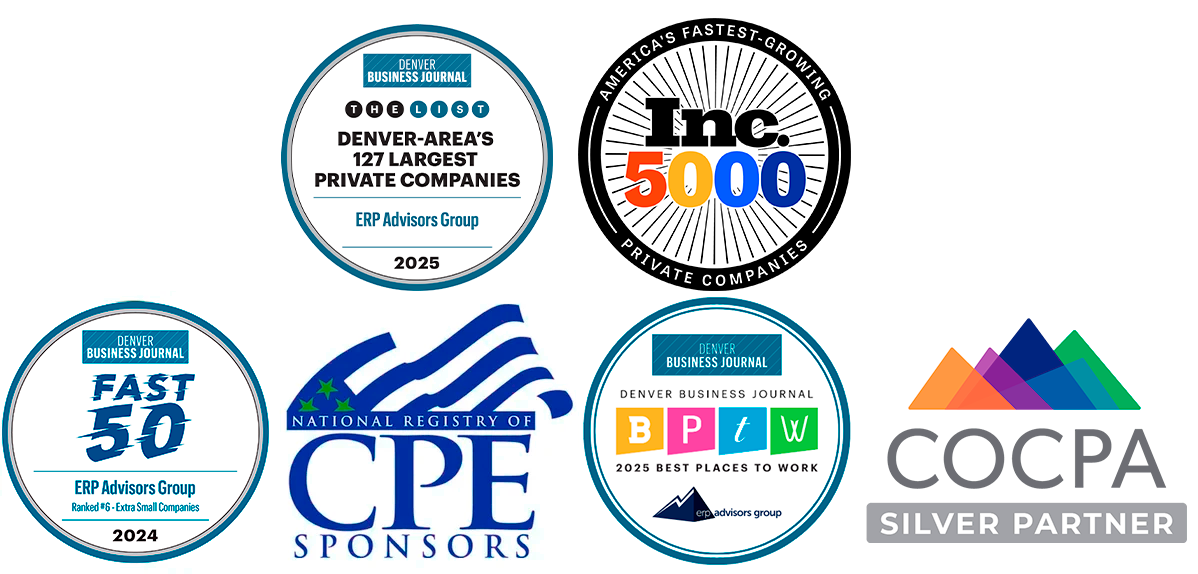
When your company is ready to make the change and begin the process to update your software, following ERP implementation best practices can keep your project on track.
Readiness Assessment for ERP Implementation: 5 Steps to Success
One of the first and most important steps to take is determining what resources you are going to need and how to get them onto the implementation project. Here is an internal resources readiness assessment we have created to help encourage ERP implementation best practices.
1. Who Do You Need?
When it comes to ERP best practices, determining who you will need on your implementation team should happen first. To have a successful ERP project, your top people should be involved. You want those employees who know the business the most to ensure that things are happening as they should. This includes making sure that the software development team is putting in the correct procedures and applications.
2. How Much Time Do You Need?
Depending on the scope of the project, the updates being done, and the departments involved, following proper ERP implementation steps can take a lot of time. There will be initial meetings to decide what systems and processes will be affected and what kinds of applications will be implemented. The people you recruit for the project must be able to invest a large amount of time in keeping it running. Take a realistic look at what is going to be done and how much time it will require is an important part of the process.
3. Are They Available?
Once you know who you need and how much time they should devote to the project, you must determine whether those people are available. If your best people aren’t busy and can take on a project without any problem, you’ll be among the vast minority of businesses. Chances are that your people will be extremely busy, which makes this step feel like a no-win situation. Your top people will already have a lot on their plate — and that is exactly why you will need them on the implementation. The unfortunate truth is that you’ll be destined for ERP implementation failure without them. Thankfully, the answer lies in the next steps.
4. Do You Need Additional Help?
If your best employees are finding it difficult to pull themselves away from their day-to-day projects, you may have to consider bringing in additional help. One option would be to transfer an employee from a different department to backfill the job. This will free up the executive or other needed person so they can spend time on the ERP implementation. If you don’t have any spare people, you can explore the option of hiring personnel from a staffing firm on an hourly rate to cover the duties of project personnel.
5. Should You Offer Incentives?
Another strategy to recruit top people for your ERP project is to offer additional incentives. This could mean an increase in salary while they take part in the implementation, while still handling their regular duties. You can also offer other incentives, such as granting them a different title, or even recognizing them to the team to show your appreciation for their participation. Savvy employees will see such projects as a great opportunity to increase their experience for future opportunities within the organization.
No One Can Do It for You
It is important to note that no one else can tell you what resources you will require for an ERP implementation. Only you will know the internal details of your organization well enough to make those determinations. Good vendors and implementation partners can tell you that you should have a project manager, business analyst, technical lead, or subject matter expert. But are they going to be able to tell you that your project manager must be on the ERP implementation for 30 hours a week? Unfortunately, that is something only you can decide.
When to Use External Resources
In some cases, after doing the above assessment, you may determine that you need to bring in external resources to assist with an ERP implementation. Maybe some of your people cannot be spared for the project, even if someone was brought in to assist with their duties. Or perhaps you have specialized areas that will be updated, and you feel a consultant is necessary. For instance, if you are doing a manufacturing implementation, you may need a manufacturing specialist to assist with the project.
If you need a lot of additional assistance, another option would be to hire an ERP consulting firm that is able to do client-side implementation services. An ERP software consultant’s job is to manage all the resources at a value-add level and steer the project along to completion.
Don’t Forget the Budget
Once you have completed the Internal Resource Readiness Assessment, don’t forget to update your budget. If you have determined some roles must be backfilled with external temporary staff, account for their wages in your budget. Or if you have decided that you must hire a consultant, you will need to add their fees as well. To have a successful ERP implementation, it is important to keep in mind that the budget goes far beyond just the new software application itself.
The Importance of Change Management
Another component of ERP implementation best practices is appropriate change management. Early in the days of implementations, technical people were hired to make updates and train people. But they often couldn’t tell management why employees weren’t then using the new system.
Implementation change management came about from an awareness of the user’s viewpoint on a project. People began to look at how updates would affect people inside and outside of the organization and how to mitigate those impacts.
Not all updates need change management. For instance, if you are sending your customers a new invoice, but it looks like the old one and is only coming out of a new system, no change management may be needed. But you will need to look at that change to make the assessment.
Change management includes the following:
- Looking at different users to determine how updates will affect their processes.
- Grouping users together into types of functionality to determine changes to an entire area.
- Assessing what users did before and what they will be doing after the change.
- Mitigating the differences by training, such as creating example documents or educational videos.
- Getting users involved and helping them understand why the changes are needed.
Change is hard for anyone, and you may find that no matter what you do, some people are going to be unhappy with updates. But also remember that most people want what’s best for the company. So, if they understand the change and know why it will ultimately help them and help the organization, they will accept it.
ERP implementation best practices include assessing your resources as well as determining what change management you will need to implement as part of your project. Doing these steps will assist you with a successful go-live.

